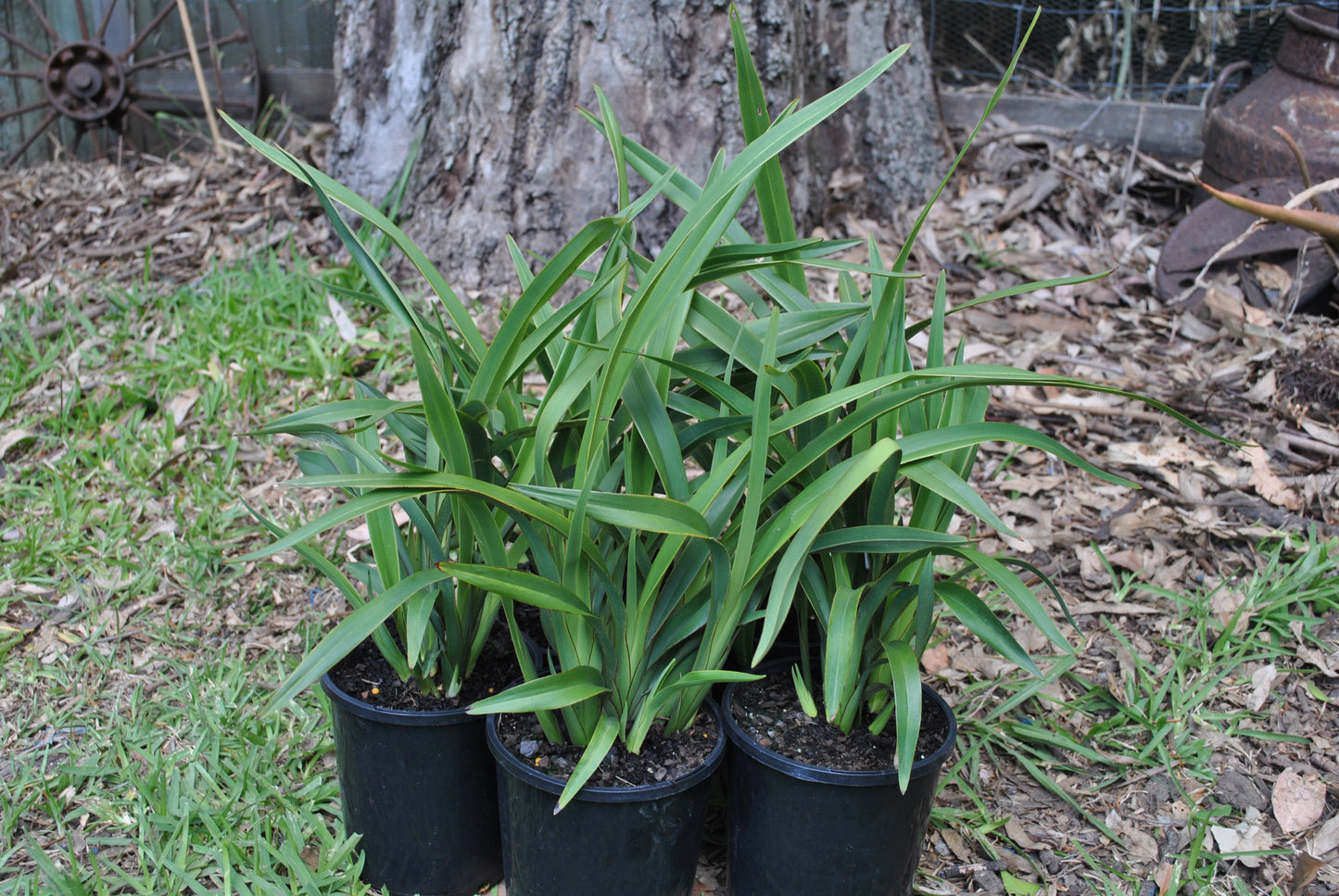Blue Flax-lily (Dianella brevipedunculata)
Blue Flax-lily (Dianella brevipedunculata)
Couldn't load pickup availability
$80 minimum spend required for checkout.
Why we love this plant!
Why we love this plant!
A hardy and adaptable Australian native, the Blue Flax-lily features strappy green foliage and delicate blue flowers, followed by vibrant blue-purple berries. These edible berries provide a valuable food source for birds and insects, making it an excellent plant for supporting local biodiversity. Well-suited to South East Queensland’s climate, it thrives in coastal gardens, bushland settings, and water-wise landscapes due to its drought tolerance. Its clumping habit and low-maintenance nature make it useful for ground cover, borders, and erosion control on sloped sites. This plant is particularly effective in restoring native habitats, as it grows well in a variety of soils, from sand to clay, making it a versatile addition to wildlife-friendly and low-maintenance gardens.
Care Considerations
Care Considerations
Watering preferences:
- Drought tolerant once established, requiring minimal watering except in prolonged dry conditions.
Mulching preferences:
- Applying mulch around the base may help retain moisture and suppress weeds.
Fertilising preferences:
- Fertilisation is generally not required, though an occasional application of a balanced fertiliser may support growth.
Pruning preferences:
- Pruning is generally not required, aside from removing damaged leaves to maintain a tidy appearance.
Good to Know:
- Produces blue berries that attract birds.
Plant Details
Plant Details
| Common uses: | Border planting, Container growing, Attractive foliage, Drought hardy/tolerant, Low maintenance garden, Pollinator-friendly, Robust/Hardy, Erosion control, Coastal garden, Rocky or dry gardens (Xeriscape), and Understory planting |
| Expected Height Range: | 0.5 m - 1 m |
| Spread Range: | 0.5 m - 1 m |
| Preferred positioning: | Full sun, Partial sun, and Partial shade |
| Flower Season/s: | Spring and Summer |
| Flower Colour/s: |
|
| Plant life cycle: | Perennial |
| Habitat: | Native to eastern Australia, where it is found in a variety of habitats, from coastal regions to forest understories and open grasslands. It is well adapted to both shaded and exposed conditions. |
| Leaf information: | Strappy, deep green leaves with a slightly arching habit. |
| Preferred Soil: | Prefers well-drained, loamy, or sandy soils but adapts to moderately fertile clay soils if drainage is maintained. |
Share


